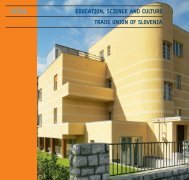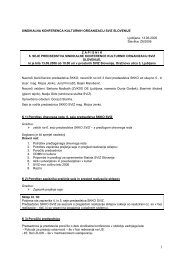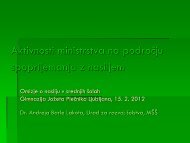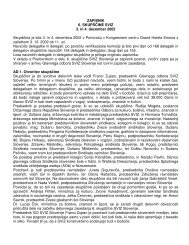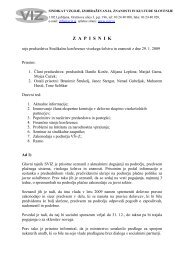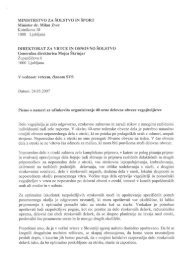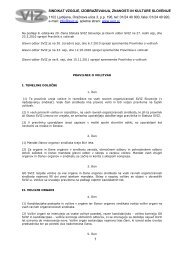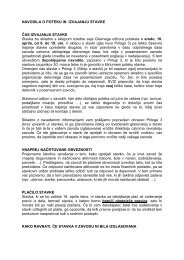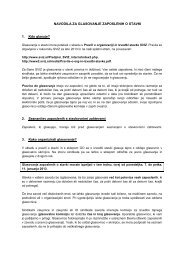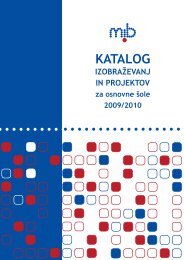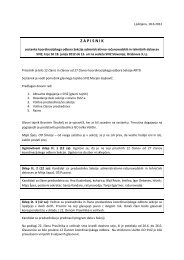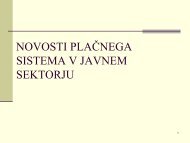You also want an ePaper? Increase the reach of your titles
YUMPU automatically turns print PDFs into web optimized ePapers that Google loves.
and optimistic, while in the three-part song-like second movement Mozart<br />
uses a theme by Johann Christian Bach, paying homage to the composer,<br />
who had passed away in January 1782. The main theme of the concluding<br />
Rondeau is gentle and gracious.<br />
Since his student years, Australian drawer, poet and thinker Michael Leunig<br />
has published cartoons; during his 35 year career as a cartoonist most of his<br />
work was published in the Australian newspapers The Herald and The Age. At<br />
first he focused his attention on burning cultural, political and social issues,<br />
then in 1969 he published a cartoon in which there appears a small man on<br />
a duck, riding into the sunset with a teapot on his head. The duck and the<br />
teapot appear in the groundbreaking cartoons of his life, although in various<br />
periods other figures expressing Leunig’s view of the world also appear in<br />
his work. In recent years, his cartoons have been commentaries on events in<br />
Australia and throughout the world, again with a more political orientation.<br />
From the very start his work has been controversial, bringing Leunig both a<br />
great deal of admiration as well as antagonism. For his achievements and<br />
influential contribution to Australian culture, Leunig was named as a living<br />
national treasure of Australia in 1999.<br />
Leunig has published numerous collections of cartoons, poetry with cartoons<br />
and pure poetry, as well as collections of prayers. His work also inhabits the<br />
fields of music, theatre, therapy, religion and spirituality. His view of life, as<br />
expressed in his cartoons and texts, is explicitly humanistic but marked by<br />
many philosophies; in it we find a Christian view of the world mixed with<br />
a kind of pantheism. Leunig believes that man’s place is in nature – not in<br />
the convenience of exploiting nature, rather in being capable of integrating<br />
himself into nature. Contemporary society, which forces us into competition<br />
and conflict, is the main cause of the spiritual poverty of people and<br />
of ‘humanistic decadence’; the role of the artist/poet in society is almost<br />
therapeutic. Art reminds people of their connection with nature, it liberates<br />
them, gives them the ability to enjoy life and relieves suffering. Every living<br />
being, and especially humanity, should care about what happens to other<br />
living beings on the planet – otherwise life can become pure misery.<br />
PROGRAM / PROGRAM<br />
This kind of thinking also appears in Leunig’s other projects, amongst the<br />
most resounding of which in recent years have been Carnival of the Animals<br />
(2000) and Carnival of the Human Animals or Carnival of the Humans (2007).<br />
Both of these projects have come about in cooperation with Richard Tognetti<br />
and the Australian Chamber Orchestra, and are derived from the music of<br />
composer Camille Saint-Saëns, who composed his unusual work as a satirical<br />
commentary on his pianistic colleagues. Carnival of the Animals was<br />
written on holiday in Austria in 1886 for the composer’s intimate circle of<br />
friends. Apart from the movement The Swan, Saint-Saëns did not allow the<br />
work to be published during his lifetime because he believed that it was trivial<br />
and could damage his reputation. With his verses and illustrations Leunig<br />
brought the carnival closer to the Australian public by replacing the original<br />
animals in Carnival of the Animals with animals characteristic of Australia.<br />
111



